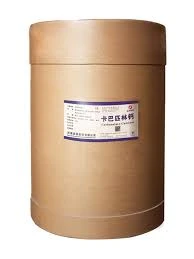- Afrikaans
- Albanian
- Amharic
- Arabic
- Armenian
- Azerbaijani
- Basque
- Belarusian
- Bengali
- Bosnian
- Bulgarian
- Catalan
- Cebuano
- Corsican
- Croatian
- Czech
- Danish
- Dutch
- English
- Esperanto
- Estonian
- Finnish
- French
- Frisian
- Galician
- Georgian
- German
- Greek
- Gujarati
- Haitian Creole
- hausa
- hawaiian
- Hebrew
- Hindi
- Miao
- Hungarian
- Icelandic
- igbo
- Indonesian
- irish
- Italian
- Japanese
- Javanese
- Kannada
- kazakh
- Khmer
- Rwandese
- Korean
- Kurdish
- Kyrgyz
- Lao
- Latin
- Latvian
- Lithuanian
- Luxembourgish
- Macedonian
- Malgashi
- Malay
- Malayalam
- Maltese
- Maori
- Marathi
- Mongolian
- Myanmar
- Nepali
- Norwegian
- Norwegian
- Occitan
- Pashto
- Persian
- Polish
- Portuguese
- Punjabi
- Romanian
- Russian
- Samoan
- Scottish Gaelic
- Serbian
- Sesotho
- Shona
- Sindhi
- Sinhala
- Slovak
- Slovenian
- Somali
- Spanish
- Sundanese
- Swahili
- Swedish
- Tagalog
- Tajik
- Tamil
- Tatar
- Telugu
- Thai
- Turkish
- Turkmen
- Ukrainian
- Urdu
- Uighur
- Uzbek
- Vietnamese
- Welsh
- Bantu
- Yiddish
- Yoruba
- Zulu
nov . 24, 2024 17:59 Back to list
Dosage Guidelines for Ivermectin Injection in Goat Health Management
Ivermectin Injection Dosage for Goats A Comprehensive Guide
Ivermectin is a broad-spectrum antiparasitic agent commonly used in veterinary medicine to control various parasitic infections in livestock, including goats. It is particularly effective against a range of external parasites, such as mites, lice, and ticks, as well as internal parasites like gastrointestinal nematodes. However, appropriate dosing and administration are crucial for maximizing efficacy and ensuring the safety of the animals. This article will provide a detailed overview of the recommended dosage of ivermectin injection for goats, considerations for use, and best practices for administration.
Understanding Ivermectin
Ivermectin, a product of the fermentation of the soil bacterium Streptomyces avermitilis, acts by disrupting the nervous system of parasites, leading to paralysis and death. This makes it a highly effective treatment for controlling worm infestations and external parasites in goats.
Dosage Guidelines
The typical injectable formulation of ivermectin for goats is at a concentration of 1% (10 mg/mL). When considering the dosage, it is essential to take into account the weight of the goat and the specific condition being treated.
1. Standard Dosage The recommended dose for ivermectin injection in goats is generally 0.2 mg per kg of body weight. This translates to about 0.2 mL of the injectable solution per 10 kg of body weight.
2. Weight Calculation Before administering ivermectin, you must accurately weigh the goat. If you do not have a scale, you can estimate the weight based on breed and body condition. For more precise dosing, however, having an accurate weight is crucial.
3. Administration Ivermectin is administered via subcutaneous (under the skin) injection. The recommended site for injection is the area behind the ear or in the neck region, as this helps to reduce discomfort for the animal and allows for better absorption.
ivermectin injection dosage for goats

4. Frequency In most cases, a single dose is effective; however, depending on the severity of the infestation and the type of parasites, a follow-up treatment may be necessary. It is advisable to consult a veterinarian for cases of severe infestations.
Special Considerations
- Age and Health Young kids and pregnant or lactating goats may require special consideration when administering ivermectin. Always consult a veterinarian for recommendations tailored to specific scenarios.
- Withdrawal Period There is a withdrawal period associated with ivermectin use in food-producing animals. Generally, a withdrawal period of 14 to 21 days is recommended before slaughter to ensure that the drug has cleared from the animal’s system. Furthermore, milk produced during this period should not be consumed.
- Resistance Management Overuse of antiparasitic medications can lead to the development of resistance. To combat this, it is essential to rotate dewormers and combine different classes of anthelmintics for optimal parasite control.
- Monitoring Regular fecal examinations can help track the effectiveness of the treatment and determine whether a second dose is necessary. Monitoring body condition and overall health following treatment is also essential.
Conclusion
Ivermectin is a valuable tool in the management of parasitic infections in goats, but its effectiveness relies heavily on correct dosage and administration practices. Farmers and goat owners must ensure they are using the correct dosing protocols, taking into consideration the animal's weight, health status, and specific needs. Regular consultation with a veterinarian can enhance parasite control programs on the farm, contributing to the overall health and productivity of the herd. By understanding and following the guidelines for ivermectin injection dosage, goat owners can protect their livestock from harmful parasites while ensuring their well-being and productivity for years to come.
In summation, proper knowledge and application of ivermectin dosages can play a significant role in maintaining a healthy goat population. With effective parasite management, farmers can achieve better productivity, improved animal welfare, and ultimately, a more successful farming operation.
-
Guide to Oxytetracycline Injection
NewsMar.27,2025
-
Guide to Colistin Sulphate
NewsMar.27,2025
-
Gentamicin Sulfate: Uses, Price, And Key Information
NewsMar.27,2025
-
Enrofloxacin Injection: Uses, Price, And Supplier Information
NewsMar.27,2025
-
Dexamethasone Sodium Phosphate Injection: Uses, Price, And Key Information
NewsMar.27,2025
-
Albendazole Tablet: Uses, Dosage, Cost, And Key Information
NewsMar.27,2025













